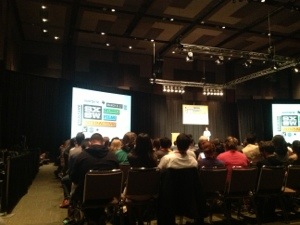Astro Teller
Does your work support crazy or risky “moonshot” ideas? Are you given the freedom to take risks? Many times it takes a war to think big, or risky, or “Moonshot”. Moonshot thinking starts takes a global scale problem, then you have to make some sort of sci-fi proposal to make that problem go away. There has to be some reality in the sci-fi sounding idea so you can convince others that it will actually work. Google supports “Moonshot” ideas. Ideas that are worth doing that would matter to the entire planet.
Why does this matter?
Is thinking like this worth it? It matters because when you try to do something radically hard, you approach the problem differently than when you try to make something incrementally better. If you attack the problem as if it’s solvable even though you don’t know how to solve it, the results will shock you. Perspective shifting is way more than being smart.
Google[X] is like Peter Pan’s with PhD’s. If failure doesn’t happen at least half the time, we’re not shooting high enough. It isn’t about money. If you’re adding huge amounts of value to the world, the money will come later. A “classic business plan” isn’t needed. Just get it out there. When you think about the impact and positivity of the impact you think about and solve problems differently.
Google[X] found a way to determine your location inside on google maps, and spun it into Google Geo.
Google[X] is trying to create an AI that works like a neural network. They’re working on visual identification and language identification and learning.
Homework: What would I work on if I knew ahead of time I wouldn’t fail? Why wouldn’t you start that tomorrow?
“Dream big, and pay the bills along the way.” –Elon Musk
He has bravery and creativity that make him successful. You have to be willing to learn from your failures and move forward. You have to be humble to be audacious. If you’re going slowly enough that you don’t break your prototypes, you’ll never go radically fast.
A moonshot factory isn’t just picking something crazy to go after, it’s moonshot built on moonshot. It goes from who you hire, to how you break stuff. It’s moonshots all the way down.

Solveforx.com


